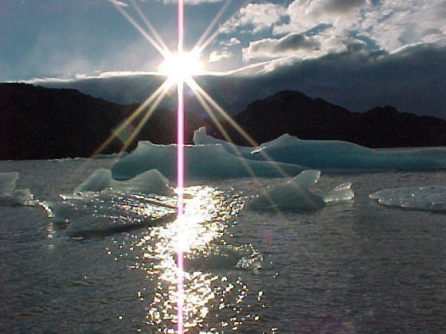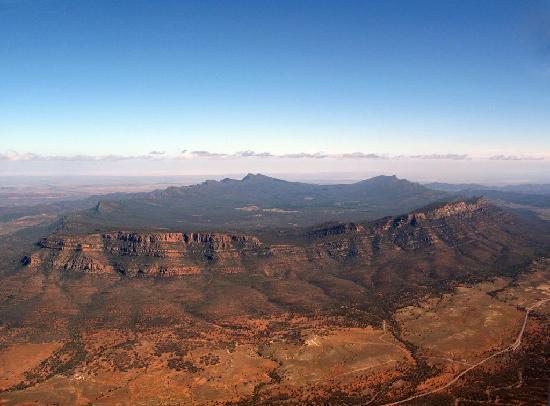Extreme climate changes may result in loss of features from a mainland.
Whether it's rising sea levels, desertification, monsoon rains, melting glaciers or ocean acidification, climate change is rapidly changing our planet Mainland.
We may be one of the last generation to see some places of the earth's most cherished.
Here's a list of 10 places:
Whether it's rising sea levels, desertification, monsoon rains, melting glaciers or ocean acidification, climate change is rapidly changing our planet Mainland.
We may be one of the last generation to see some places of the earth's most cherished.
Here's a list of 10 places:

Slightly more than 100 years ago, there were 150 glaciers scattered throughout Glacier National Park. In 2005, only 27, and predicted they will disappear in 2030, or even before that.
Many of the plant and animal species that require cold water, which means the ecosystem of the park can change dramatically when the glaciers disappear.
Many of the plant and animal species that require cold water, which means the ecosystem of the park can change dramatically when the glaciers disappear.

Venice has experienced severe flooding in November 2009, when the water level reached 131 cm.
Venice has long been sinking, but rising sea levels have made the situation more dire.
The frequency of flooding is increasing every year, leaving many question how much longer can stay in Venice on the water.
Venice has long been sinking, but rising sea levels have made the situation more dire.
The frequency of flooding is increasing every year, leaving many question how much longer can stay in Venice on the water.

Great barrier reef can be seen from space, but muilai gradually disappear as climate change.
Increasing the temperature of the oceans, water pollution, acidification of the sea and storms continued to damage the coral and has caused mass coral bleaching. What has made time in 8,000 years for nature can just disappear in our lives.
Increasing the temperature of the oceans, water pollution, acidification of the sea and storms continued to damage the coral and has caused mass coral bleaching. What has made time in 8,000 years for nature can just disappear in our lives.

By some estimates, the Sahara in Africa grew wide at the level of 0.5 kilometers per month.
This has become the largest desert in the world, and still could expand again all of North Africa, the African continent changing environment.
This has become the largest desert in the world, and still could expand again all of North Africa, the African continent changing environment.

Maldives is the lowest country in the world, with a maximum natural ground level 2.3 meters (7 feet, 7 inches), and an average of only 1.5 meters (4 feet, 11 inches) above sea level.
If sea levels rise too much, the country could get an unwanted title: The first nation to be swallowed by the sea due to global warming.
If sea levels rise too much, the country could get an unwanted title: The first nation to be swallowed by the sea due to global warming.

An untouched beauty, Patagonia, South America could be dramatically altered by climate change.
Many glacier wall that fell because of rising temperatures and declining rainfall. Although this land will not disappear entirely, but the scenery there will be very different if global warming continues.
Many glacier wall that fell because of rising temperatures and declining rainfall. Although this land will not disappear entirely, but the scenery there will be very different if global warming continues.

Located in the Ganges-Brahmaputra lowlands delta, Bangladesh is at the center of a perfect storm in the climactic conditions. About 50 percent of the area would be flooded if the sea level will rise 1 meter.
Natural disasters, like floods, tropical cyclones, tornadoes and tidal going on here almost every year - with tragic results.Terletak di Sungai Gangga-Brahmaputra dataran rendah Delta, Bangladesh berada pusat di badai yang sempurna pada kondisi klimaks. Sekitar 50 persen dari luasnya akan banjir jika permukaan laut akan naik 1 meter.
Bencana alam, seperti banjir, siklon tropis, tornado dan pasang surut terjadi di sini hampir setiap tahun - dengan hasil yang tragis.
Natural disasters, like floods, tropical cyclones, tornadoes and tidal going on here almost every year - with tragic results.Terletak di Sungai Gangga-Brahmaputra dataran rendah Delta, Bangladesh berada pusat di badai yang sempurna pada kondisi klimaks. Sekitar 50 persen dari luasnya akan banjir jika permukaan laut akan naik 1 meter.
Bencana alam, seperti banjir, siklon tropis, tornado dan pasang surut terjadi di sini hampir setiap tahun - dengan hasil yang tragis.

Global warming is heating the Arctic twice as fast around the world, which means the beautiful northern Alaska tundra may disappear completely if the temperature continues to rise.
If the Alaskan tundra melts, not only drastically change the ecosystem, but also release additional carbon - ironically accelerate global warming.
If the Alaskan tundra melts, not only drastically change the ecosystem, but also release additional carbon - ironically accelerate global warming.

Just like the Sahara in Africa, desertification threatens South Australia. In all areas, fresh water supply dries quickly.
Meanwhile, dry plains increases the incidence of forest fires, threaten agriculture, wildlife and hundreds of homes in Australia.

European Alps at an altitude lower than the Rocky Mountains, and glaciers as well as resort skinya more vulnerable to the impacts of global warming. Famous glaciers is expected to disappear in 2050.
Tidak ada komentar:
Posting Komentar